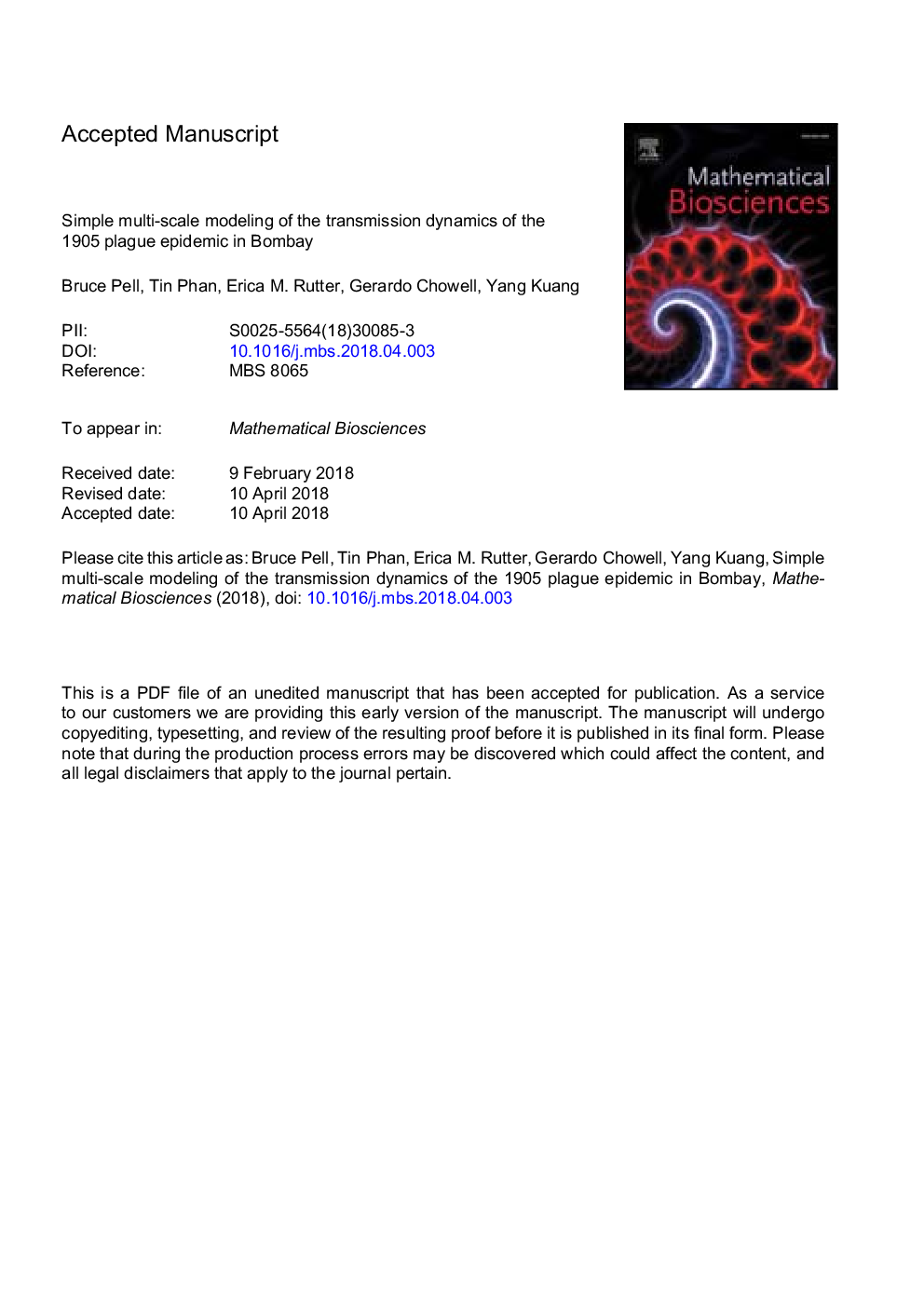| Article ID | Journal | Published Year | Pages | File Type |
|---|---|---|---|---|
| 8876994 | Mathematical Biosciences | 2018 | 26 Pages |
Abstract
The first few disease generations of an infectious disease outbreak is the most critical phase to implement control interventions. The lack of accurate data and information during the early transmission phase hinders the application of complex compartmental models to make predictions and forecasts about important epidemic quantities. Thus, simpler models are often times better tools to understand the early dynamics of an outbreak particularly in the context of limited data. In this paper we mechanistically derive and fit a family of logistic models to spatial-temporal data of the 1905 plague epidemic in Bombay, India. We systematically compare parameter estimates, reproduction numbers, model fit, and short-term forecasts across models at different spatial resolutions. At the same time, we also assess the presence of sub-exponential growth dynamics at different spatial scales and investigate the role of spatial structure and data resolution (district level data and city level data) using simple structured models. Our results for the 1905 plague epidemic in Bombay indicates that it is possible for the growth of an epidemic in the early phase to be sub-exponential at sub-city level, while maintaining near exponential growth at an aggregated city level. We also show that the rate of movement between districts can have a significant effect on the final epidemic size.
Related Topics
Life Sciences
Agricultural and Biological Sciences
Agricultural and Biological Sciences (General)
Authors
Bruce Pell, Tin Phan, Erica M. Rutter, Gerardo Chowell, Yang Kuang,
